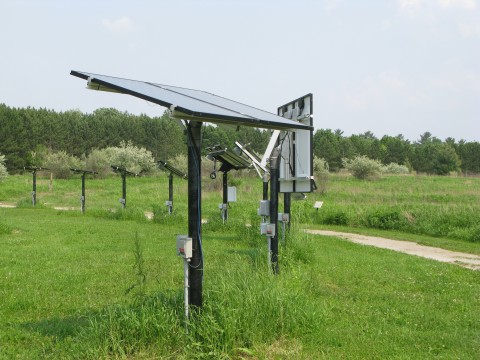Evaluation of the Influence of Tilt Angle on the Performance of Photovoltaic Panels
Stationary photovoltaic (PV) installations typically have solar modules that are tilted up from the horizontal at some predetermined angle so as to maximize their annual energy yield. Solar geometry suggests that the module tilt angle ought to be similar to the latitude of the installation. In Toronto, for example, that would be near 44o. However, there are other important variables to consider. Locations with a lot of cloud cover may have an optimal tilt angle that is lower than the latitude but in cold climates, lower tilt angles may also be associated with greater losses due to poorer snow shedding. The complexity of these considerations demands that experimental data, rather than theoretical simulations, be required to determine the optimal tilt angle for a given location.
Towards this end, the Sustainable Technologies Evaluation Program (STEP) is currently undergoing a PV module tilt angle study at the solar field test site at the Living City Campus. Performance data are being collected for several different pairs of identical modules set at different tilt angles and different deviations from true south. Cameras are employed to monitor snow coverage of the modules to provide additional information on the snow shedding characteristics associated with each tilt angle. The ultimate aim of the study is to experimentally determine the optimal tilt angle for this location and also, to determine appropriate energy yield de-rate factors for losses associated with snow coverage at different tilt angles.

